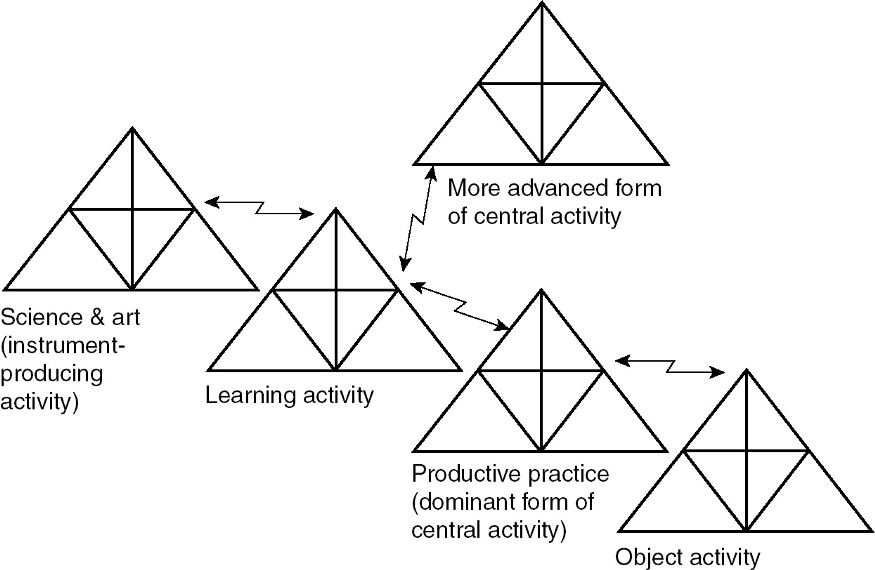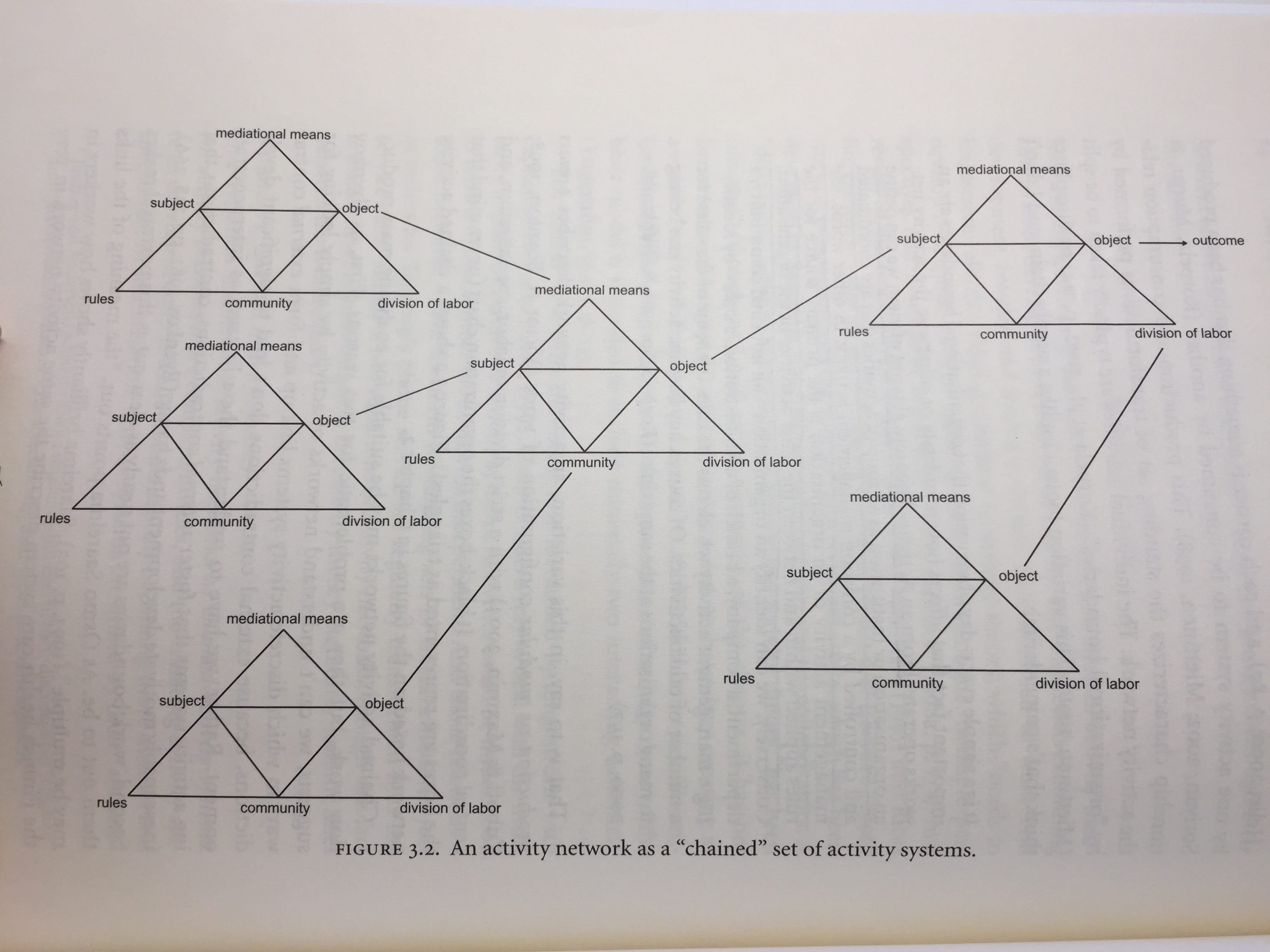Chained Activity Systems [Activity Theory]
![Chained Activity Systems [Activity Theory]](https://images.unsplash.com/photo-1568687204040-52c8455445c1?crop=entropy&cs=tinysrgb&fit=max&fm=jpg&ixid=MnwxMTc3M3wwfDF8c2VhcmNofDc4fHxjaGFpbnxlbnwwfHx8fDE2MzQxNjU3NjM&ixlib=rb-1.2.1&q=80&w=960)
We have learned Yrjö Engeström’s Activity System model. In order to discuss the relationship between learning activity and other types of human activities, Engeström used a new term called Activity Network.
He said, “Human learning begins in the form of learning operations and learning actions embedded in other activities, phylogenetically above all in work. Learning activity has an object and a systemic structure of its own. Its prerequisites are currently developing within earlier activity types: school-going, work, and science/art. In the network of human activities, learning activity will mediate between science/art on the one hand and work or other central productive practice on the other hand.” (1987, p.133)

The above diagram and various types of diagramming indicate the future evolution of the Activity System theory.
While Engeström worked on adopting activity theory for developmental learning in work settings, HCI researcher Susanne Bødker applied activity theory to studies of HCI. These two lines work on different aspects of Leontev’s activity theory. Engeström focused on the general structure of human activity while Bødker worked on the hierarchical structure of activity and human-computer interaction. Later these two lines form as a whole as the third generation of activity theory (Nardi, 1996; Kaptelinin & Nardi, 2006).
Both Engeström and Bødker published their books in 1987. Bødker’s book Through the Interface — a Human Activity Approach to User Interface Design is also a classical study of HCI and Activity Theory. According to Clay Spinuzzi (2020), “…without using the term, Bødker described activity networks: i.e., constellations of interconnected, not necessarily hierarchically related activities in which one activity’s object could function as another activity’s mediator. The concept was necessary for analyzing design within interconnected systems of expertise. Consider a writer, who labors to produce her object (a script). The script is then given to a television announcer, who uses the script as a tool in a second activity (Bødker, 1987, p.40). This concept of activity networks was critical for describing workplace development in activity theoretical terms for HCI, since HCI by definition involved applying computer expertise to domains that had not yet been computerized — that is, it involved making contact between two or more heretofore separate activities.”
The above diagram shows the layer of activity network in Engeström’s study. Spinuzzi (2020) also pointed out, “Engeström expanded the analysis to activity networks, that is, two or more interacting activity systems. Whereas Bødker described such networks in brief, Engeström coined the term ‘activity network’ and theorized the concept. This innovation was necessary for understanding interactions and quaternary contradictions in workplaces.”
According to Clay Spinuzzi, “The notion of activity networks, first forwarded by Engeström with explicit reference to Latour (1992, Chapter 1), is a way to deal with the insularity implied by Leontiev’s activity systems. Activities could be understood as related to one another rather than as independent. And those relations — those networks — take the form of standing sets of transformations…One variation understands activity networks as chained activity systems…In this variation, activity system are linked by their ‘corners’ (Helle, 2000, p.89), and each corner is something that has been produced by one activity system to be consumed by another (Korpela, Mursu, & Soriyan, 2002; Miettinen, 1998) This production-and-consumption relationship characterizes the standing set of transformations performed by the activity network.”(2008, p.74)

Clay Spinuzzi also pointed out another variation of activity networks: overlapping activity systems. He said, “Multiple activity systems converge on the same object, although that object is construed in different ways. Engeström, in fact, counsels us to ‘follow the objects’ (2004, p.7) to understand how activity networks develop. ” (2008, p.77)
This variation is a promising direction to connect Activity Theory with the current dynamic work landscape.
